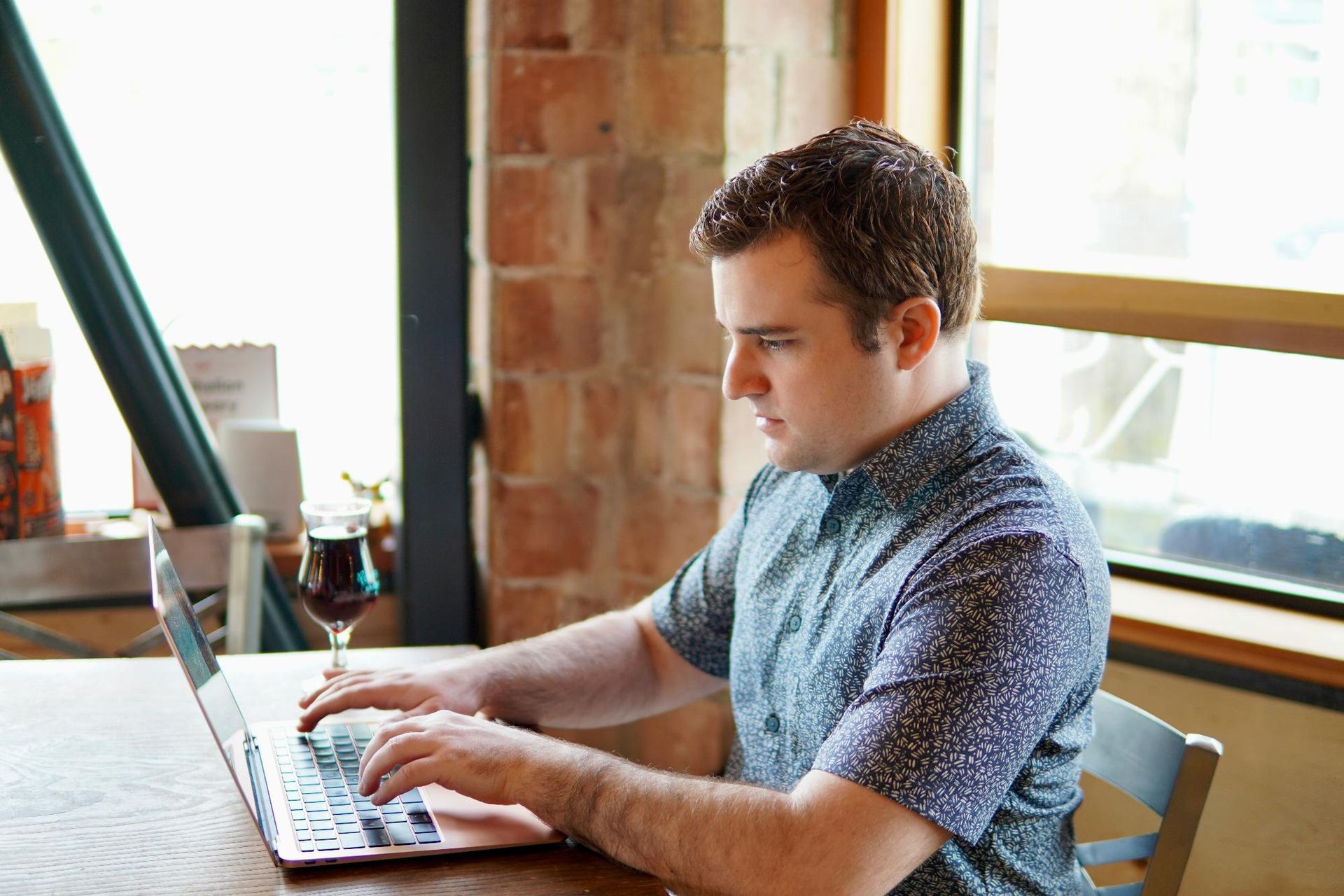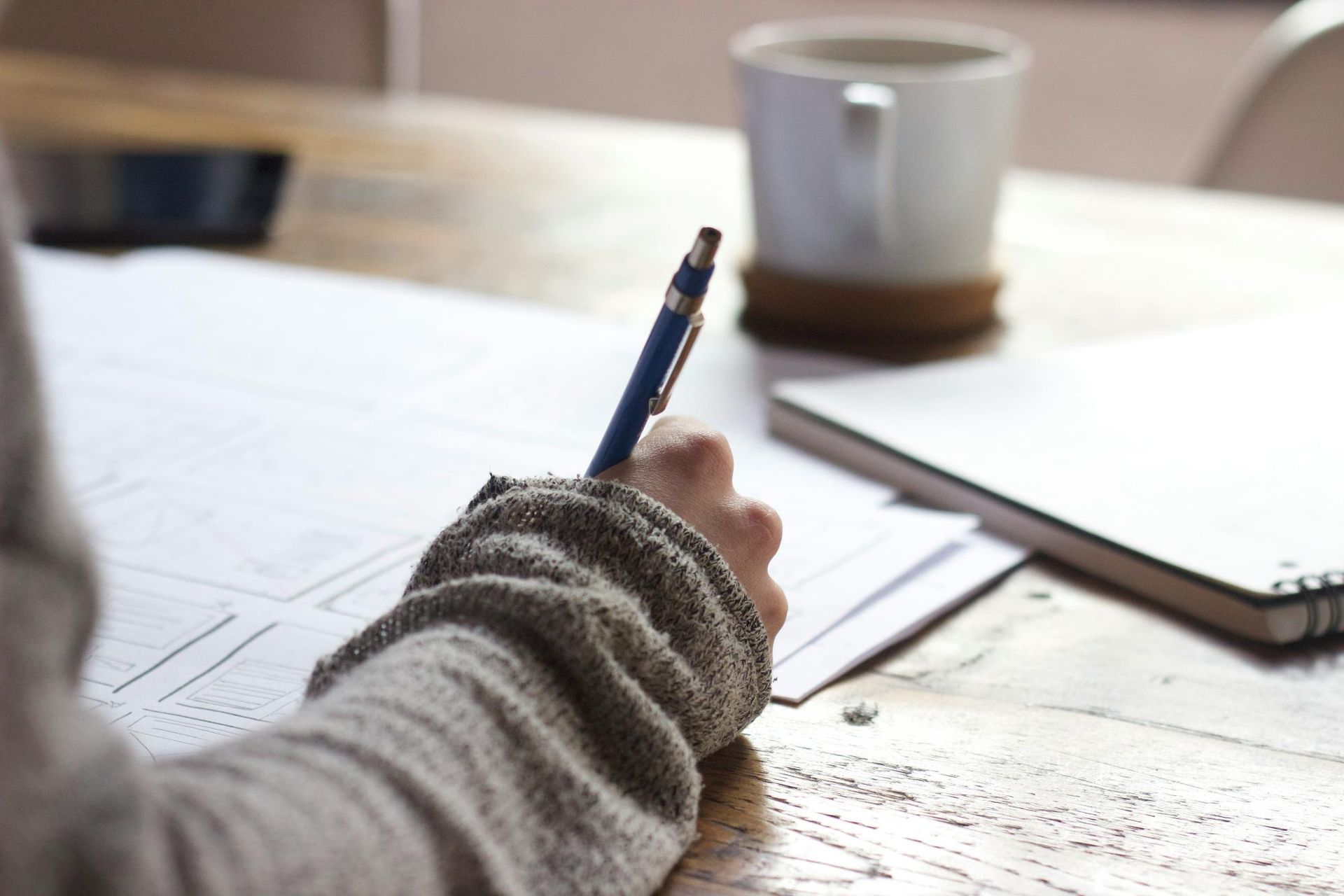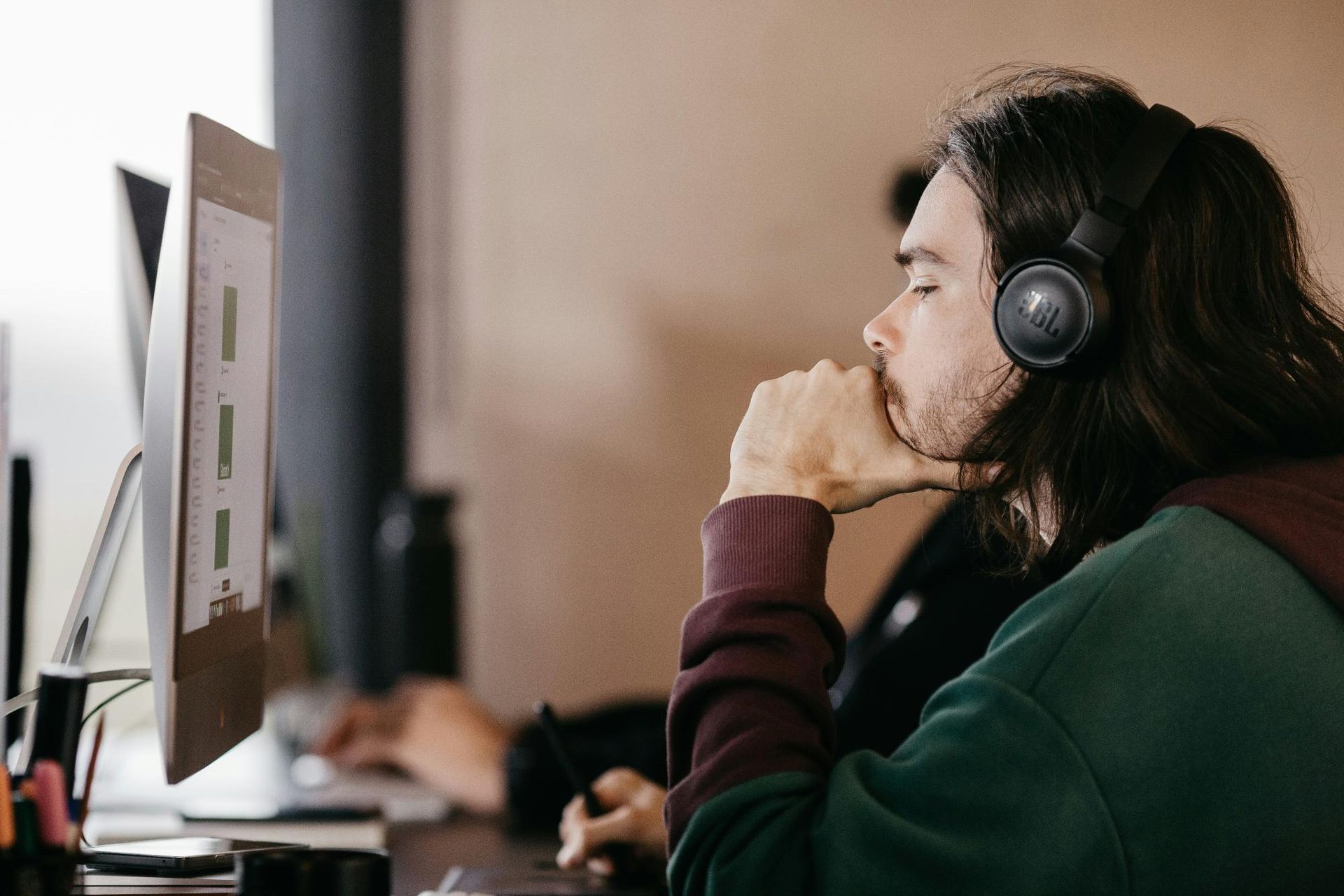The Risks of Over-reliance on AI in Creative Work
The integration of AI in creative industries has led to a re-evaluation of how technology both enables and constrains human creativity. As chatbots and other AI tools become more sophisticated, they challenge traditional ideas of originality and authorship. This shift raises concerns about the role of the human mind in generating ideas and the risks of over-reliance on AI in creative work.
In this article, we'll explore the double-edged sword of AI in creative processes and discuss how to balance technological assistance with human ingenuity.
KEY TAKEAWAYS
- AI integration in creative industries offers efficiency but risks compromising human creativity and originality
- Balancing AI assistance with human input is crucial for maintaining artistic depth and innovation
- Cross-disciplinary knowledge helps creatives leverage AI while preserving unique human perspectives
- Successful human-AI collaborations expand creative possibilities, while overreliance can lead to formulaic outputs
- Education must evolve to equip creatives with skills for thriving alongside AI in their fields

Understanding the Impact of AI on Creative Industries
The creative industries are undergoing significant transformation due to artificial intelligence. AI's impact extends across various sectors, including arts, design, music, and content creation. This shift raises important questions about these fields' management practices, educational approaches, and cognitive development. AI tools reshape how professionals work and learn as they become more advanced. While AI offers many benefits, research indicates it also challenges creativity and originality. The following sections explore these developments in detail, examining the implications of AI's growing influence across different creative domains and the risks of over-reliance on AI in creative work.
Examining the Booming Use of AI in Arts and Design
AI's integration in arts and design has sparked a data-driven revolution, transforming creative processes and outcomes. This shift challenges traditional ideas of intuition and artistic expression as computers increasingly assist in generating ideas and executing complex designs. While AI tools offer new possibilities, they also raise concerns about the potential decline in human creativity. Some experts worry that over-reliance on AI might weaken original thinking and problem-solving skills, which are essential for innovation in the arts and design fields.
How AI Tools Are Shaping the Music Production Landscape
AI tools have revolutionized music production, providing composers and producers with powerful software for data analysis and sound manipulation. These advanced systems streamline the creative process, allowing artists to experiment with complex arrangements and generate unique sounds. However, this technological shift also poses risks to traditional musicianship and critical thinking skills. As AI becomes more prevalent in music creation, there's growing concern about the potential loss of human intuition and emotional depth in compositions. While the technology is impressive, over-reliance on AI may lead to homogenized music that lacks the nuances human creativity brings. Striking a balance between AI assistance and artistic expression remains a key challenge for the music industry.
The Rise of AI-written Content: Pros and Cons
The rise of AI-written content has transformed information creation, providing employers with tools to generate text quickly and efficiently. Generative AI can produce articles, reports, and marketing materials at scale, saving time and resources for businesses across industries. However, the widespread use of AI-generated content raises concerns about trust and job security. As machines take on more writing tasks, human writers may face job losses, and readers might question the authenticity and quality of AI-produced information. Striking a balance between AI assistance and human creativity remains a crucial challenge in the evolving landscape of content creation.
The Diminishing Human Touch in Creativity
The increasing reliance on AI in creative processes raises concerns about the diminishing human touch in artistic expression as algorithms take center stage. The complexity of human creativity risks being overshadowed by machine-generated content. This shift demands careful attention to balancing technological advancement with preserving the unique qualities of human-driven art. Policymakers and creatives must address the challenge of maintaining the emotional depth and intuitive knowledge that humans bring to the creative process, even as AI tools become more sophisticated. The following sections explore how personal flair, intuition, and emotional connection are being affected by the growing influence of AI in creative industries.
Exploring the Loss of Personal Flair in AI-generated Content
AI-generated content often lacks the unique personal flair that human creators bring, raising concerns about plagiarism and authenticity in fields like advertising and finance. This loss of individuality can lead to homogenized outputs that fail to capture the nuances of human creativity. As AI tools become more prevalent, there's a risk that creative professionals may rely too heavily on automated systems, potentially diminishing their ability to produce truly original content. This shift could result in a creative landscape dominated by AI-generated works, stifling innovation and reducing the diversity of ideas in various industries.
The Importance of Human Intuition in Art and Creativity
Human intuition plays a crucial role in art and creativity, fostering innovation and originality that artificial intelligence cannot replicate. While AI is a powerful tool, it lacks the emotional depth and lived experiences that shape human artistic expression. Over-reliance on AI in creative work risks turning it from a helpful tool into an overused crutch, potentially stifling human intuition and leading to biased or homogeneous outputs. Balancing AI assistance with human insight is essential for preserving the unique qualities that make art truly captivating and meaningful.
Can Machines Replicate the Human Emotional Connection?
AI can predict emotional responses based on vast datasets but struggles to replicate genuine human emotional connections in creative works due to the nuanced interplay of memory, language, and lived experiences. As AI continues to advance, questions arise about the need for regulation to preserve the uniqueness of human emotional expression in art. Human creativity is rich and nuanced, informed by lived experiences and natural intuition, while AI-generated content is limited and data-driven, based on programmed algorithms and simulated calculations.

AI's Double-Edged Sword: Efficiency vs. Originality
The rapid advancement of AI technologies presents both opportunities and challenges for creative industries. While AI-driven outputs offer efficiency and speed, they may inadvertently compromise the depth and originality of human creativity. This raises important questions about automation bias and its impact on innovation, exploration, and leadership. As machines become increasingly capable of generating content, creative professionals must find a balance between leveraging AI's capabilities and maintaining their unique insights. With widespread access to AI tools through the internet, this dynamic becomes even more complex, necessitating a critical examination of when reliance on AI begins to stifle rather than enhance creative processes.
The Speed of AI-driven Outputs Versus the Depth of Human Creativity
AI-driven outputs offer speed and efficiency in content creation but often lack the depth and nuance of human creativity. While automation can generate large volumes of material quickly, it struggles to capture the subtle insights and emotional resonance that come from human experience. Human creators, though slower, bring unique perspectives shaped by personal experiences, feedback, and extensive reading. This depth leads to more original and impactful work, emphasizing the need to balance AI assistance with human input in creative processes.
When Does Reliance on AI Stifle Innovation?
Over-reliance on AI can stifle innovation when it replaces human creativity rather than enhances it. In fields like graphic design, machine learning algorithms may produce quick results but often lack the nuanced understanding of human designers, leading to homogenized outputs that fail to capture the unique aspects of reality. Innovation suffers when AI tools become a crutch instead of a supplement to human skill. Excessive dependence on AI can hinder the development of critical thinking and problem-solving abilities, which are essential for pushing the boundaries of creativity and innovation in various industries. The initial excitement over AI's efficiency can gradually lead to a decrease in human input and creativity, resulting in homogenized outputs and a decline in innovative thinking. Balancing AI assistance with human creativity is crucial to maintaining originality and innovation.
The Balance Between Leveraging AI and Maintaining Unique Insights
Striking a balance between leveraging AI and maintaining unique insights requires careful consideration in creative fields. While AI tools enhance efficiency, over-reliance can dilute a brand's value and voice. Creative professionals must strategically integrate AI while preserving their unique perspectives for authenticity and originality. The key is to use AI as a complementary tool rather than a replacement for human creativity. This approach ensures that the benefits of AI do not come at the cost of sacrificing the unique insights that drive true innovation and brand differentiation.

Intellectual Property Concerns in the Age of AI
The rapid integration of AI in creative industries has sparked complex intellectual property debates, challenging traditional notions of authorship and ownership. As data science and analytics drive AI-generated works, educators and creators alike face the challenge of navigating this new landscape. The involvement of AI in creative processes raises critical questions about copyright protection, attribution, and the future of human artistry. These concerns necessitate re-evaluating existing legal frameworks to address the unique challenges posed by AI-generated content, balancing innovation with the rights of human creators.
Navigating the Legal Landscape of AI-generated Works
The legal landscape surrounding AI-generated works presents complex challenges for creators and policymakers alike. As algorithms produce increasingly sophisticated content, questions of authorship, ownership, and copyright protection become murky, requiring careful examination of existing laws and potential new frameworks to address these ethical concerns. Legal experts and researchers are exploring various approaches to navigate this uncharted territory. There is a growing need for adaptable regulations that can keep pace with rapidly evolving AI technologies while also ensuring proper credit is attributed and intellectual property rights are protected.
Who Owns Creativity: The Creator or the Code?
The question of ownership in AI-generated creativity challenges traditional notions of authorship and intellectual property. As AI becomes integral to creative workflows, the lines between human and algorithmic contributions blur, raising questions about the nature of creativity in an AI-augmented environment. Legal frameworks struggle to keep pace, leading to ambiguity in ownership rights. The role of the human creator in designing AI systems versus the AI’s autonomous outputs complicates the attribution of creativity. This dilemma necessitates a re-evaluation of intellectual property laws to address the unique challenges posed by AI-generated works.
The Future of Copyright Laws in Protecting Human Artists
The future of copyright laws will likely need significant adaptation to address the challenges posed by AI-generated content. As AI tools become more sophisticated, it's crucial to balance their use with fostering human creativity. Lawmakers may need to develop new frameworks that protect human artists while allowing for AI-driven innovation. This could include tools to track and attribute human contributions to AI-assisted works, ensuring fair compensation and recognition for artists while maintaining a healthy creative ecosystem.

Preparing for an AI-Intensive Future Without Losing Essence
As AI becomes more integrated into creative processes, individuals and organizations must adapt to maintain their unique strengths while leveraging technology. This balance requires education, cross-disciplinary knowledge, and strategic AI integration. The creative community faces challenges in preserving human ingenuity while navigating data security in an AI-dominated landscape. Society's evolving relationship with AI demands new skills, from managing AI-generated outputs to fostering innovation beyond algorithmic boundaries. By embracing AI tools without sacrificing creativity, professionals can prepare for an AI-intensive future while retaining their essential human touch.
Strategies for Integrating AI Tools Without Sacrificing Creativity
Effective integration of AI in creative processes requires a balanced approach that enhances rather than replaces human skills. Creative professionals can leverage AI for routine tasks, data analysis, and idea generation while reserving higher-level decision-making and emotional depth for human input. By setting clear boundaries for AI usage and regularly evaluating its impact on creativity, creators can maintain artistic integrity. Viewing AI as a collaborative tool allows for a symbiotic relationship where AI optimizes workflows and suggests concepts while humans refine ideas, ensure originality, and bring emotional resonance to their work.
Education and Training for Creatives in an AI-dominated Era
Education and training for creatives in an AI-dominated era must evolve to equip professionals with skills that complement AI. Curricula should focus on critical thinking, emotional intelligence, and ethical decision-making alongside hands-on experience with AI tools. Interdisciplinary approaches are key, blending traditional creative disciplines with data science, programming, and AI ethics. This holistic education prepares creatives to navigate AI-assisted work while maintaining their unique human perspectives, integrating AI tool proficiency, human-AI collaboration, AI ethics, and problem-solving in their training.
The Role of Cross-Disciplinary Knowledge in Preserving Human Creativity
Cross-disciplinary knowledge is crucial for preserving human creativity in an AI-dominated landscape. By combining insights from fields like art, science, psychology, and technology, creative professionals develop perspectives that AI struggles to replicate. This interdisciplinary approach fosters innovation and problem-solving beyond the limitations of narrow AI applications. Expertise across multiple domains allows creators to draw connections between seemingly unrelated concepts, leading to breakthrough ideas. This human capacity for lateral thinking and abstract reasoning remains a significant advantage over AI, ensuring that creative work continues to resonate on a deeply human level in an increasingly AI-driven world.
Conclusion
Creative professionals must balance AI integration with human intuition to avoid stifling innovation and originality. Over-reliance on AI risks diminishing the unique perspectives and emotional depth that human creators bring. While AI offers efficiency and data-driven insights, it cannot replicate the nuanced understanding and lived experiences that inform human creativity. By using AI as a complementary tool rather than a replacement, creative industries can harness its benefits while preserving the irreplaceable value of human artistry and maintaining the authenticity that resonates with audiences.
© 2024 All Rights Reserved | Keira Brinton
All Rights Reserved | Keira Brinton | Website Design by Tally Creative














